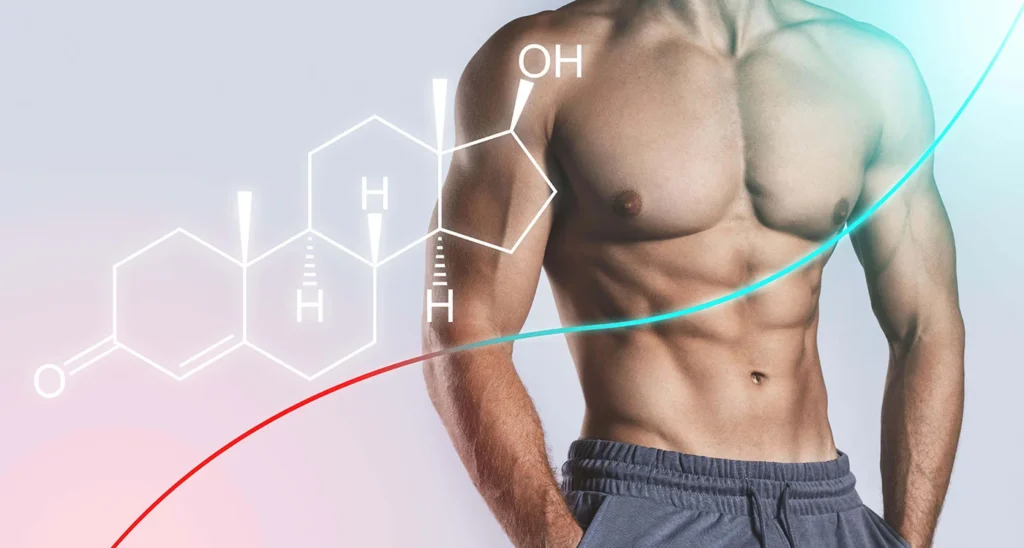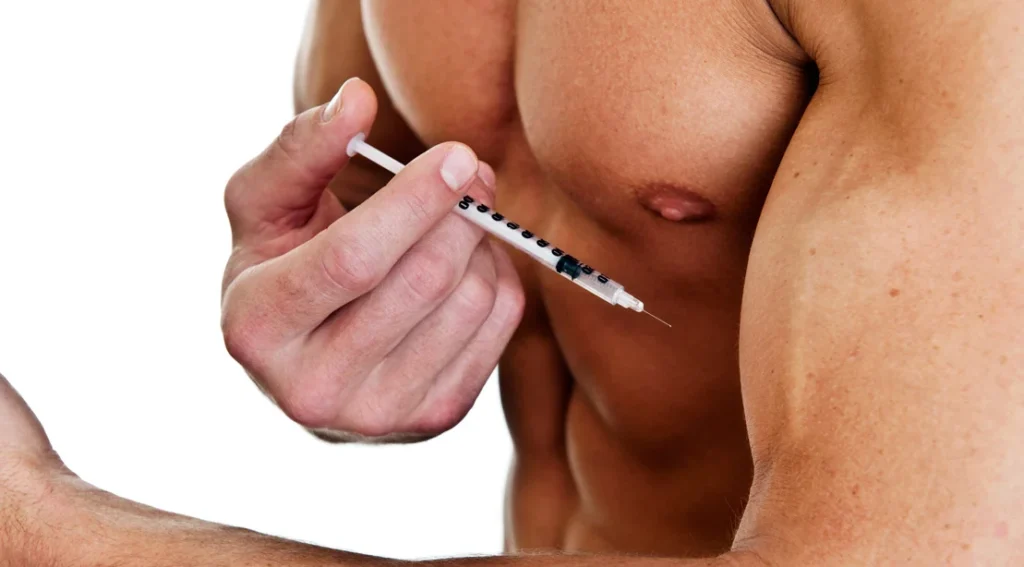Steroids, also known as corticosteroids or anabolic-androgenic steroids, are a class of biologically active compounds derived from the hormone testosterone. They are naturally produced in the human body and play a crucial role in various physiological processes, including growth and development, immune function, metabolism, and stress response. In addition to naturally occurring steroids, synthetic versions have been developed for medical and performance-enhancing purposes.
Introduction to Steroids: What are They and How Do They Work?

There are two primary types of steroids: corticosteroids and anabolic steroids. Corticosteroids, such as cortisol, are primarily used for their anti-inflammatory and immunosuppressive effects. They are commonly prescribed for conditions like asthma, allergies, and autoimmune disorders. Anabolic steroids, on the other hand, mimic the effects of testosterone and are primarily used to promote muscle growth and enhance physical performance. These are the steroids most commonly associated with sports and bodybuilding.
Steroids work by binding to specific receptors within cells, influencing the production of various proteins and enzymes. In the case of anabolic steroids, they promote protein synthesis and stimulate muscle growth by increasing the rate at which cells build new proteins. This process, known as anabolism, leads to increased muscle mass, strength, and athletic performance. Anabolic steroids also have androgenic effects, which include the development of male secondary sexual characteristics, like facial hair and a deepened voice.
Corticosteroids, on the other hand, work primarily by suppressing the immune system and reducing inflammation. They do this by inhibiting the production of inflammatory chemicals, like prostaglandins and leukotrienes, and by decreasing the activity of immune cells. This helps to alleviate symptoms of inflammatory conditions and autoimmune disorders, but it can also lead to side effects like increased susceptibility to infections and impaired wound healing.
In summary, steroids are a diverse group of compounds that play a critical role in a wide range of physiological processes. While they have proven to be valuable tools in medicine, their misuse and abuse for performance-enhancing purposes have led to widespread controversy and concerns about their potential harm to users and society at large. Understanding how they work and the risks associated with their use is essential for making informed decisions about their role in both medical and non-medical contexts.
The History of Steroids: From Ancient Times to Modern Sports
There is a danger of making ancient Greek athletes superhuman ethical people, but they were humans like us. There was cheating for sure, bribery for sure.
Hugh Ming Lee, classics professor at Maryland University
The use of substances to enhance physical performance can be traced back to ancient civilizations. Greek athletes, for example, were known to consume special diets and herbal preparations to improve their abilities in sports competitions. However, the modern history of anabolic steroids began in the early 20th century with the scientific exploration of the male hormone testosterone and its effects on the human body.

In the 1930s, scientists isolated testosterone and synthesized its first derivatives, laying the groundwork for the development of anabolic steroids. These early experiments demonstrated the potential of these substances to promote muscle growth and increase strength, paving the way for their use in medical applications. During World War II, anabolic steroids were used to treat undernourished soldiers in an effort to improve their physical condition and recovery.
The use of anabolic steroids in sports gained significant attention in the 1950s when it was discovered that Soviet athletes were using testosterone injections to enhance their performance. This led to a rapid expansion of steroid use in various sports, including weightlifting, track and field, and bodybuilding. As a result, international sports organizations began implementing anti-doping measures to counteract the growing prevalence of steroid use among athletes.
In the following decades, the use of steroids in sports continued to grow, despite increasing awareness of their potential health risks and the introduction of more stringent anti-doping policies. High-profile cases, such as the Ben Johnson scandal at the 1988 Seoul Olympics and the BALCO affair in the early 2000s, brought the issue of steroid use to the forefront of public consciousness and fueled calls for more effective regulation and enforcement.
The development and use of corticosteroids followed a different trajectory. Initially used for their anti-inflammatory and immunosuppressive properties, corticosteroids have become essential tools in the treatment of numerous medical conditions, such as asthma, allergies, and autoimmune diseases. While their use in sports is less controversial, they are still subject to anti-doping regulations due to their potential to provide performance-enhancing benefits.
In conclusion, the history of steroids spans from ancient times to modern sports, with their use and development evolving alongside our understanding of their potential benefits and risks. As our knowledge of these substances continues to grow, so too will the ongoing debate.
Medical Uses of Steroids: Therapeutic Benefits and Applications
Steroids have long been recognized for their therapeutic potential, with both corticosteroids and anabolic steroids playing crucial roles in the treatment of various medical conditions. Their diverse range of applications demonstrates the versatility and importance of these compounds in modern medicine.
Corticosteroids, such as prednisone and hydrocortisone, are widely used for their anti-inflammatory and immunosuppressive properties. They are prescribed to treat a variety of conditions, including asthma, allergies, rheumatoid arthritis, lupus, and inflammatory bowel disease. In addition, corticosteroids are used to manage acute conditions like skin rashes, poison ivy reactions, and severe allergic reactions. Furthermore, they play a vital role in the treatment of autoimmune diseases by suppressing the immune system’s overactive response and reducing inflammation.
Anabolic steroids, on the other hand, are primarily employed for their ability to promote muscle growth and improve strength. They are used to treat conditions characterized by muscle wasting and weakness, such as cachexia (a wasting syndrome associated with chronic diseases like cancer, HIV/AIDS, and heart failure), severe burns, and osteoporosis. Anabolic steroids are also prescribed for hormone replacement therapy in individuals with low testosterone levels, which can lead to symptoms like fatigue, decreased libido, and loss of muscle mass.
In addition to their direct therapeutic applications, steroids can also be used as adjunct therapy in certain cases. For example, anabolic steroids may be prescribed to help patients undergoing chemotherapy or radiation therapy maintain their muscle mass and strength. Similarly, corticosteroids can be used in conjunction with other medications to enhance their effectiveness or reduce side effects, such as in the case of cancer treatments, organ transplantations, and severe respiratory conditions.
Despite their numerous therapeutic benefits, it is important to recognize that steroids also carry potential risks and side effects, particularly when used inappropriately or for extended periods. Side effects of corticosteroids may include weight gain, high blood pressure, osteoporosis, and an increased risk of infections. Anabolic steroids, when misused or abused, can lead to cardiovascular issues, liver damage, hormonal imbalances, and psychiatric disorders.
In summary, steroids play a significant role in modern medicine, offering therapeutic benefits and applications for a wide range of uses.
Types of Steroids: Anabolic, Corticosteroids, and Others
Steroids are a diverse class of compounds with a wide range of biological functions and applications. They can be broadly categorized into two main types: anabolic steroids and corticosteroids. Beyond these two primary categories, there are also other types of steroids with unique properties and functions.

Anabolic steroids, also known as anabolic-androgenic steroids (AAS), are synthetic derivatives of the hormone testosterone. They are designed to promote muscle growth and enhance physical performance by increasing protein synthesis and reducing muscle breakdown. Anabolic steroids are commonly used in medical settings to treat muscle wasting conditions, such as cachexia, severe burns, and osteoporosis, as well as for hormone replacement therapy. However, they are also frequently associated with misuse and abuse in sports and bodybuilding due to their performance-enhancing properties. Common examples of anabolic steroids include testosterone, nandrolone, and trenbolone.
Corticosteroids are a class of steroids that primarily serve to regulate inflammation and immune responses. They are produced naturally in the body by the adrenal glands and can also be synthesized for medical use. Corticosteroids are prescribed for a wide range of conditions, including allergies, asthma, autoimmune diseases, and inflammatory disorders. They work by suppressing the immune system and reducing the production of inflammatory chemicals, thereby alleviating symptoms and inflammation. Some well-known corticosteroids include prednisone, hydrocortisone, and dexamethasone.
In addition to anabolic steroids and corticosteroids, there are other types of steroids with distinct functions and applications. For example, progestogens and estrogens are steroid hormones involved in the regulation of the female reproductive system and the development of secondary sexual characteristics. Progestogens, such as progesterone, play a crucial role in maintaining pregnancy, while estrogens, like estradiol, regulate menstrual cycles and promote the development of female-specific traits.
Mineralocorticoids, such as aldosterone, are another type of steroid hormone that primarily regulate electrolyte balance and blood pressure. They are produced in the adrenal cortex and act on the kidneys to control the absorption of sodium and excretion of potassium, thereby maintaining the body’s fluid balance.
In conclusion, there are several types of steroids, each with unique properties, functions, and applications. Anabolic steroids and corticosteroids are the two main categories, with the former primarily used for promoting muscle growth and the latter for regulating inflammation and immune responses. Other types of steroids, such as progestogens, estrogens, and mineralocorticoids, are essential for various physiological processes, including the regulation of the reproductive system and maintenance of electrolyte balance. Understanding the distinctions between these types of steroids is crucial for their appropriate use in medical and non-medical settings, as well as for recognizing their potential benefits and risks.
The Legal Status of Steroids: A Global Overview
The legal status of steroids varies widely across the globe, with some countries adopting strict regulations while others take a more lenient approach. This variation in legal status reflects differing perspectives on the potential benefits, risks, and societal implications of steroid use, as well as the challenges associated with enforcement and regulation.
In the United States, anabolic steroids are classified as Schedule III controlled substances under the Controlled Substances Act. This classification means that they are considered to have a potential for abuse and dependence, as well as accepted medical uses with certain restrictions. As a result, the possession, distribution, and use of anabolic steroids without a valid prescription is illegal. Violations of these regulations can result in fines, imprisonment, or both. Corticosteroids, on the other hand, are legal when prescribed for medical purposes but are also subject to regulations and restrictions.
In the United Kingdom, anabolic steroids are classified as Class C drugs under the Misuse of Drugs Act. This classification means that their possession for personal use is not considered a criminal offense, but their distribution and sale without a prescription are illegal. Penalties for the unauthorized supply of anabolic steroids can include fines, imprisonment, or both. The UK also has strict anti-doping regulations in place to prevent the use of steroids and other performance-enhancing substances in sports.
In Canada, anabolic steroids are classified as Schedule IV controlled substances under the Controlled Drugs and Substances Act. This means that their possession, distribution, and use without a prescription are illegal, but the penalties for violations are generally less severe than in the United States. Corticosteroids are also regulated and require a prescription for lawful use.
Smuggling and importing illegal drugs into Canada is a criminal offence, and the CBSA takes this issue very seriously
Tom Critchlow, Director of Enforcement and Intelligence, CBSA Atlantic Region
In other countries, such as Mexico and Thailand, the legal status of steroids is more lenient. In some cases, anabolic steroids can be purchased over the counter without a prescription, making them more accessible to both medical and non-medical users. However, these countries may still have anti-doping regulations in place to prevent their use in sports.
In conclusion, the legal status of steroids varies significantly across the globe, reflecting diverse perspectives on their potential benefits, risks, and societal implications. This global variation underscores the importance of understanding the specific regulations and restrictions in each country or jurisdiction, as well as the ongoing challenges.
Legal Consequences of Steroid Trafficking and Distribution
The trafficking and distribution of steroids are illegal activities in many countries, and those caught engaging in these actions can face significant legal consequences. Penalties for steroid trafficking and distribution vary depending on the country or jurisdiction, but they generally include fines, imprisonment, or both. These legal consequences serve as deterrents against the unauthorized sale and distribution of steroids and aim to protect public health and maintain the integrity of sports.
In the United States, as previously mentioned, anabolic steroids are classified as Schedule III controlled substances, making their distribution and sale without a valid prescription illegal. Penalties for steroid trafficking and distribution can be severe, with potential consequences including large fines, imprisonment for up to ten years, or both. Additionally, individuals convicted of these offenses may face forfeiture of assets associated with the illicit steroid trade, such as property, vehicles, and bank accounts.
In the United Kingdom, the unauthorized supply of anabolic steroids is also illegal under the Misuse of Drugs Act. Penalties for trafficking and distribution can include fines, imprisonment for up to 14 years, or both. Furthermore, individuals convicted of these offenses may also face additional consequences, such as seizure of assets and restrictions on travel or professional licenses.
In Canada, the distribution and sale of anabolic steroids without a prescription are prohibited under the Controlled Drugs and Substances Act. Penalties for these offenses can include fines, imprisonment for up to three years, or both. Like other countries, Canadian authorities may also seize assets related to the illegal steroid trade.
Even in countries with more lenient steroid regulations, such as Mexico and Thailand, trafficking and distribution may still be subject to penalties. In these cases, legal consequences may be less severe than in countries with more stringent regulations, but they still serve as deterrents against the unauthorized sale and distribution of steroids.
In addition to the legal consequences of steroid trafficking and distribution, those involved in these activities may also face social and professional repercussions. For example, individuals convicted of steroid-related offenses may lose their jobs, face restrictions on their ability to participate in sports, or suffer damage to their personal and professional reputations.
In summary, the trafficking and distribution of steroids are illegal activities that can result in significant legal consequences, including fines, imprisonment, and asset forfeiture.
The Ethics of Personal Steroid Use: Balancing Individual Rights and Societal Values
The ethics of personal steroid use is a complex and contentious issue, with opinions often divided between those who advocate for individual autonomy and those who emphasize the need to protect public health and societal values. This debate raises important questions about the rights and responsibilities of individuals in making choices about their own bodies, as well as the role of society and government in regulating and restricting these choices.
Proponents of individual autonomy argue that people should have the freedom to make decisions about their own bodies, including the use of steroids for non-medical purposes. They contend that, as long as an individual is well-informed about the potential risks and benefits of steroid use, they should be free to make their own choices about whether to use these substances. This perspective emphasizes the importance of personal liberty and individual rights in a democratic society.
On the other hand, those who argue for stricter regulation of steroid use emphasize the potential public health risks and societal consequences associated with the misuse and abuse of these substances. They point to the increased risk of health problems, including cardiovascular disease, liver damage, and hormonal imbalances, as well as the potential for psychological issues, such as addiction, aggression, and mood swings. Additionally, opponents of personal steroid use highlight the potential negative impact on sports and athletic competitions, as the use of performance-enhancing substances can undermine the principles of fairness and equal opportunity.
Another ethical concern related to personal steroid use is the potential for exploitation and coercion, particularly in competitive sports. Athletes may feel pressured to use steroids in order to keep up with their peers or to secure lucrative contracts and sponsorships, which can lead to a culture of abuse and normalizing the use of these substances. This raises questions about the fairness of sports and the responsibility of governing bodies to protect athletes’ wellbeing and maintain the integrity of competition.
In conclusion, the ethics of personal steroid use is a multifaceted issue that involves balancing individual rights and societal values. While some argue for the importance of personal autonomy and the freedom to make choices about one’s own body, others emphasize the need to protect public health and maintain the integrity of sports and competition. This ongoing debate highlights the complexities of regulating steroid use and the challenges in finding a balance between individual liberties and societal interests.